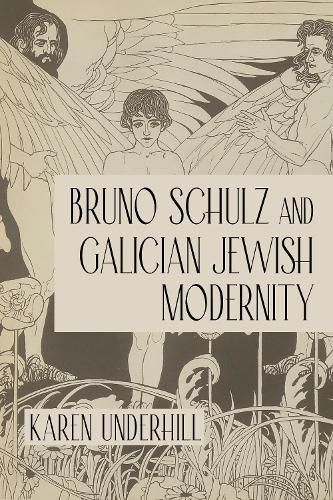Readings Newsletter
Become a Readings Member to make your shopping experience even easier.
Sign in or sign up for free!
You’re not far away from qualifying for FREE standard shipping within Australia
You’ve qualified for FREE standard shipping within Australia
The cart is loading…






Bruno Schulz (1892-1942) was a Polish writer and artist who murdered by the Nazis even as papers and plans for his escape had been prepared. In Bruno Schulz and Galician Jewish Modernity, Karen Underhill opens up the Jewish world of Eastern Europe to understand the cultural and political context of Schulz’s work, but also the multi-lingual (Yiddish, Polish, and Hebrew) worlds that resonated through it.
Underhill discovered a 1937 article by Schulz that was made available through a digitization project of interwar periodicals in Ukraine. In it, Schulz openly presents his views on the contemporary political, cultural, and spiritual concerns of his Jewish generation in Poland and Eastern Europe. Using this article as a lens, Underhill returns to Schulz’s literary texts with fresh eyes and reads them as direct expressions of his engagement with the Jewish questions of his day. The result is a unique textual encounter that opens a range of entry points into the complex Jewish world of Habsburg Galicia. Underhill shows Schulz as a confirmed modernist and affirmed diasporist even when this world was collapsing around him.
$9.00 standard shipping within Australia
FREE standard shipping within Australia for orders over $100.00
Express & International shipping calculated at checkout
Bruno Schulz (1892-1942) was a Polish writer and artist who murdered by the Nazis even as papers and plans for his escape had been prepared. In Bruno Schulz and Galician Jewish Modernity, Karen Underhill opens up the Jewish world of Eastern Europe to understand the cultural and political context of Schulz’s work, but also the multi-lingual (Yiddish, Polish, and Hebrew) worlds that resonated through it.
Underhill discovered a 1937 article by Schulz that was made available through a digitization project of interwar periodicals in Ukraine. In it, Schulz openly presents his views on the contemporary political, cultural, and spiritual concerns of his Jewish generation in Poland and Eastern Europe. Using this article as a lens, Underhill returns to Schulz’s literary texts with fresh eyes and reads them as direct expressions of his engagement with the Jewish questions of his day. The result is a unique textual encounter that opens a range of entry points into the complex Jewish world of Habsburg Galicia. Underhill shows Schulz as a confirmed modernist and affirmed diasporist even when this world was collapsing around him.